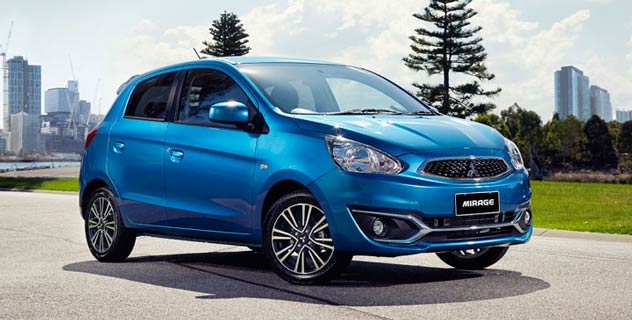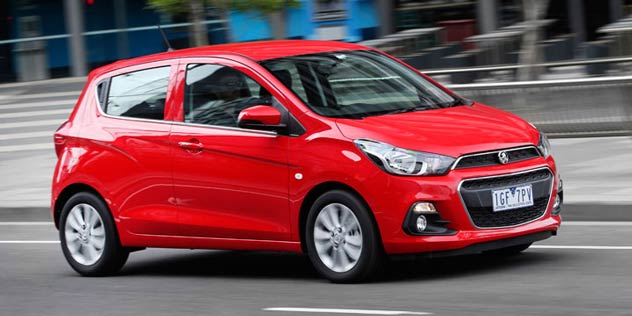
As the entry point into Australia's new car market, the micro car class is all about affordable city-focused motoring for the budget-conscious buyer.
The Kia Picanto Si five-door hatchback epitomises just what this class is all about. It is small, affordable to own and operate, very easy to drive and, most importantly, has a five-star ANCAP safety rating.
Picanto gets the jump on its competitors in the value for money stakes with an attractive drive-away price of $14,990, low insurance costs and a class-leading list of standard features. It is a single-spec model only, with a four-cylinder engine, whereas some others in the class employ three cylinder powerplants. An automatic transmission is the standard fit – rather than an extra cost option.
The value and reassurance of Kia's lengthy seven-year/unlimited-kilometre warranty and emergency roadside assistance, as well as low servicing and repair costs, should not be underestimated either. If you decide to sell the car after five years, however, you may lose a little more money on the Picanto than others in the class, based on Glass's Guide predictive values.
The combination of Kia's 1.2-litre four- cylinder engine and a conventional four-speed automatic delivers a pleasing mix of relatively nippy performance and economical fuel consumption that is well suited to the everyday requirements for this type of city-centric car. And even on the open road at 100km/h, it is a competent enough performer, given the small capacity engine's modest power and torque output.
With European-tuned suspension, the handling around town is nimble, making Picanto easy to manoeuvre and fun to drive. Its ride quality is also one of the best in the class. Kia employs disc brakes all round for Picanto, whereas most other micro class cars, and many in the light car category, have stuck with the older style front-disc/rear-drum combination.
In keeping with others in the class, you can see a few signs that this smart-looking European design and Korean-built car has been manufactured to a price, but generally speaking it is solidly constructed, and the trimming has a neat, durable appearance.
There's no denying Picanto is tiny, but for a car of its size the interior space is used efficiently. The front seats provide better than expected comfort and support, while all the controls are conveniently placed and simple to use. Not unexpectedly, seating three across the back, even if they are quite small children, is going to be a real squeeze. Two adults, however, will find there is more rear leg room than you'd imagine and the head room is also quite good. Boot space is modest, but the split/fold rear seats add a little extra versatility. It was disappointing, although again not surprising, to find that Picanto carries only a tiny space-saver spare wheel.
Although Picanto is new to the Australian market, it is a proven package that has been on sale overseas for a few years. As such, the older design is not quite as high-tech as you find in some of the cars in more expensive categories, but for this budget-focused arena Picanto has all the right ingredients and delivers them in a way that will suit most buyers.

An upgrade to Mirage in early 2016 refreshed last year's Micro Car class winner and kept it well in contention against some stiff new competition. Although no longer class-leading, there is still plenty to like about Mirage. The baby Mitsubishi is affordable to buy, economical to run and has an excellent five-star ANCAP safety rating.
As well as a minor facelift smartening up Mirage's appearance inside and out, revisions to the steering and suspension tuning provided a more precise steering feel, less body roll and better handling as well as improved ride comfort. Adding to the driving ease, hill-start assist is now standard. While the changes are noticeable, they are not massive and the newcomers to the class have raised the bar a little in terms of vehicle dynamics.
With a 1.2-litre, three-cylinder engine, Mirage is not going to out-run its competitors but it does provide a respectable balance of performance and fuel economy for everyday city commuting.
Where Mirage has an edge over the other finalists, however, is that it offers a little more usable cabin space, which in these tiny cars will be handy if you need to carry three or four people.
And for peace of mind, Mirage also has a very good five-year/100,000km warranty.

Holden engineers have transformed Barina Spark from a cheap and cheerful buzz-box into a micro car with real substance. It is an all-new car; the Barina tag has been dropped and the Spark, as it is now named, no longer needs to ride on the coat-tails of Holden's long-standing light car offering. It is certainly good enough, and therefore deserves to sell on its own merits.
Stronger performance from the new car's larger capacity 1.4-litre engine and localised steering and suspension treatment give Spark an edge in on-road ability. In addition, good seat comfort and well-laid-out controls with a slick five-speed manual gearshift and light clutch action make it the most enjoyable car in the class to drive.
The tiny Korean-made Holden has also lifted its game in terms of build quality. The presentation has a slightly more upmarket appearance than most of its peers, while Holden's latest MyLink infotainment system featuring the latest Apple CarPlay and Android Auto is a plus.
In this budget-focused category, however, the disadvantage of a considerably higher purchase price and long-term ownership considerations such as depreciation, servicing and repair costs, warranty and insurance also need to be factored into the buying equation.